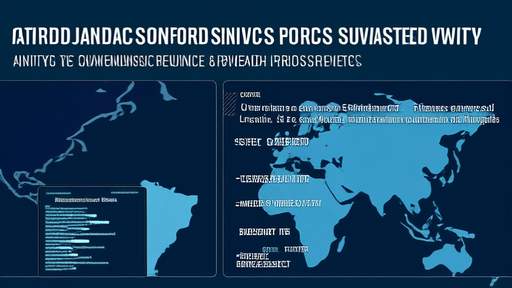The global cloud computing industry is undergoing a seismic shift as nations worldwide implement stringent data sovereignty laws. These regulations, designed to keep sensitive data within national borders, are forcing cloud providers to rethink their infrastructure and service models. From Europe's GDPR to China's Cybersecurity Law, governments are asserting control over digital information flows in ways that directly impact how multinational cloud operators conduct business.
Data localization requirements have emerged as the most visible manifestation of this trend. Countries like Russia and Vietnam now mandate that certain types of citizen data must be stored on servers physically located within their territories. This presents both logistical and financial challenges for cloud providers who previously relied on centralized hyperscale data centers to achieve economies of scale. The need to build or lease local facilities increases operational costs while potentially degrading performance through network fragmentation.
The regulatory landscape has become particularly complex for multi-national corporations operating across jurisdictions with conflicting requirements. A financial institution using cloud services might need to ensure European customer data never transits through U.S. servers while simultaneously complying with American audit requirements for its North American operations. Cloud providers are responding by creating "sovereign cloud" offerings with dedicated infrastructure stacks for specific markets, but these solutions often come at premium pricing that could slow cloud adoption rates.
Beyond storage location rules, many data sovereignty laws impose restrictions on cross-border data transfers that complicate disaster recovery strategies. Traditional cloud architectures rely on geographically distributed backups to ensure resilience, but new regulations may prohibit replicating data to other countries even for redundancy purposes. Some governments now require approval processes for any international data movement, creating bureaucratic hurdles that can delay critical business operations during outages or cyber incidents.
The impact extends to cloud service provider selection as well. Several countries have introduced certification regimes that effectively exclude foreign cloud operators from handling government or critical infrastructure data. Brazil's LGPD and India's proposed Data Protection Bill both contain provisions favoring domestic providers, potentially fragmenting what was once a global market. This protectionism raises concerns about reduced competition and innovation in affected markets while creating compliance headaches for multinational enterprises.
Emerging technologies like edge computing and hybrid cloud architectures are gaining traction as potential solutions to data sovereignty challenges. By processing sensitive data closer to its source while maintaining centralized management, these approaches attempt to balance regulatory compliance with operational efficiency. However, they require significant investment in local infrastructure and may not satisfy all jurisdictions' interpretation of data residency requirements.
The legal uncertainties surrounding data sovereignty continue to evolve as courts interpret new regulations. Recent rulings on the EU-U.S. Privacy Shield framework demonstrate how quickly established data transfer mechanisms can be invalidated. Cloud providers now face the difficult task of building infrastructure that complies with today's laws while remaining adaptable enough to meet tomorrow's requirements - all without sacrificing the performance and cost benefits that made cloud computing attractive in the first place.
Small and medium-sized enterprises may feel these impacts most acutely. Unlike tech giants with resources to establish local data centers in multiple markets, SMBs often lack the capital to customize cloud deployments for every jurisdiction. Some industry analysts predict this could lead to a two-tier cloud market where only large corporations can afford fully compliant global deployments while smaller players retreat to regional providers or on-premises solutions.
As the regulatory environment continues to fragment, cloud providers are investing heavily in compliance automation tools. These systems attempt to track data lineage, apply appropriate access controls, and generate audit trails across distributed infrastructure. However, the technical challenge of maintaining real-time compliance across dozens of jurisdictions with differing requirements should not be underestimated, particularly when dealing with legacy systems or complex supply chains.
The long-term implications for cloud innovation remain uncertain. Some experts worry that data sovereignty requirements could stifle the development of global cloud-native applications, forcing developers to create region-specific versions of their software. Others see an opportunity for providers who can deliver truly localized cloud experiences without compromising the agility and scalability that define cloud computing's value proposition.
What remains clear is that data sovereignty has moved from theoretical concern to operational reality for the cloud industry. Providers and customers alike must now navigate an increasingly complex web of national regulations that challenge the very premise of borderless digital infrastructure. How this tension between national security concerns and global connectivity resolves will shape the future of cloud computing for decades to come.

By /Jun 3, 2025

By /Jun 3, 2025

By /Jun 3, 2025

By /Jun 3, 2025

By /Jun 3, 2025

By /Jun 3, 2025

By /Jun 3, 2025

By /Jun 3, 2025

By /Jun 3, 2025

By /Jun 3, 2025

By /Jun 3, 2025

By /Jun 3, 2025

By /Jun 3, 2025

By /Jun 3, 2025

By /Jun 3, 2025

By /Jun 3, 2025

By /Jun 3, 2025

By /Jun 3, 2025

By /Jun 3, 2025

By /Jun 3, 2025